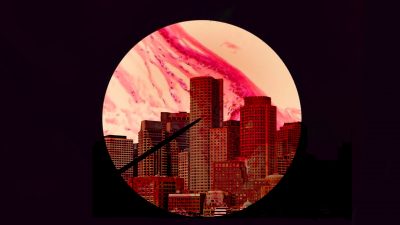The cityscape of Boston is rapidly changing. With the closing of multiple office spaces due to the pandemic, lab industries are rapidly taking over the city. The Boston Globe reports 10 million square feet of office and industrial space across Greater Boston currently being converted into lab spaces, with some industry executives estimating 20 million more in the coming years.

But is this necessarily a good thing?
Some neighbors report being wary of these labs, especially given that some of these lab spaces may be handling potentially deadly pathogens. City Counselors are debating whether to enact stricter safety regulations beyond what’s already required.
Boston University is intimately familiar with this kind of controversy. In 2002, BU released plans to build a lab that would conduct level 4 (BSL-4) research in its medical campus in the South End.
For context, lab research generally operates at four recognized levels of biosafety. BSL-1 and BSL-2 conduct research with little to no risk. BSL-3 labs have high risk at the individual level but pose little danger to the community, as the diseases researched in these labs have known treatments. BSL-4 labs pose a high risk of significant illness to individuals and the community, as they deal with diseases that do not have effective treatments.
According to one 2021 estimate, there are only 59 of these labs in the world — BU’s BioLab being one of them.
BU’s Biolab plans were met with resistance from the local neighborhood community and the government, local community members forming the Roxbury Safety Group in opposition to the lab. Much controversy came regarding the lab’s location in Boston’s South End. Some have alleged the BU’s choice to place the lab near the neighborhood of Roxbury — which is home to many communities of color — could be motivated by racism.
After multiple court cases — and a 700-page report analyzing all the ways an infectious disease studied in the lab could escape — the lab was finally approved to operate BSL-3 and BSL-4 research in late 2017.
Some may view the controversy as unnecessary. After all, we have seen firsthand the benefits of scientific advancement. The rapid development of the COVID-19 vaccine could only be possible with the existence of these spaces. The pandemic has shown in clear and explicit detail how vital it is to really understand and study these diseases.
Moreover, it is important not to feed fear-mongering myths about lab safety. We live in an age of conspiracy, where it is increasingly difficult to maintain the public’s trust in scientific institutions.
The public may be understandably concerned about the safety measures in place in these labs, but that does not change the statistics. Historically, the proportion of lab technicians who have gotten ill at these high containment labs has been very low.
But that does not mean that these incidents do not occur, or that the federal government has been transparent about bio-safety breaches in the past. Moreover, the United States has a storied history of exploiting marginalized groups for the sake of science. Marginalized communities have a right to be concerned — and a right to be informed — about how these labs are being run.
A 2015 investigation by USA TODAY Network found that the oversight of safety guidelines in lab research in the United States was mainly self-regulated, with the federal government refusing to be more transparent about safety violations and near-miss incidents.
There is no federal law mandating labs to report accidents or bio-safety breaches. This makes any potential analysis of lab safety breaches increasingly difficult and impedes other labs from learning from other scientists’ mistakes.
After a surge of government spending, more BSL-4 labs opened throughout the country, but federal lab regulations are so fragmented that federal overseers have not even determined a standard way to count them.
A 2017 report from the U.S. Government Accountability Office called for more regulatory systems and more stringent oversight of these higher-level labs.
Beth Willis, head of the citizen lab advisory panel to one of the largest high-containment research campuses in the country, was quoted in the 2015 USA TODAY investigation as saying the low number of contaminations was “a matter of good fortune” — and not, presumably, stringent lab safety regulations.
Understandably, many in the biotech lab industry would choose Boston to expand their lab spaces to be closer to colleges and other industry professionals. But given the fact that bio-safety breaches — no matter how rare — may nonetheless occur, it may be a better idea to build these labs in less densely populated areas.
Thus comes the incredibly difficult question of how to address these labs — on one hand, validating the public’s concerns and demands for more rigorous safety measures, and on the other, ensuring not to stoke already inflamed conspiracy theories and public mistrust of vital scientific research.
As these labs continue to crop up throughout the city, these questions will become more defined and publicly discussed. More rigorous and streamlined federal and state level regulation of these labs would be incredibly valuable to both building public trust and further preventing any potential safety breaches from occurring.
For now, given the lack of stringent and uniform federal regulations, these biotech labs have the responsibility to ensure they are operating with the safety of their neighbors in mind. Only time will tell how seriously they will take on this responsibility.




















































































































